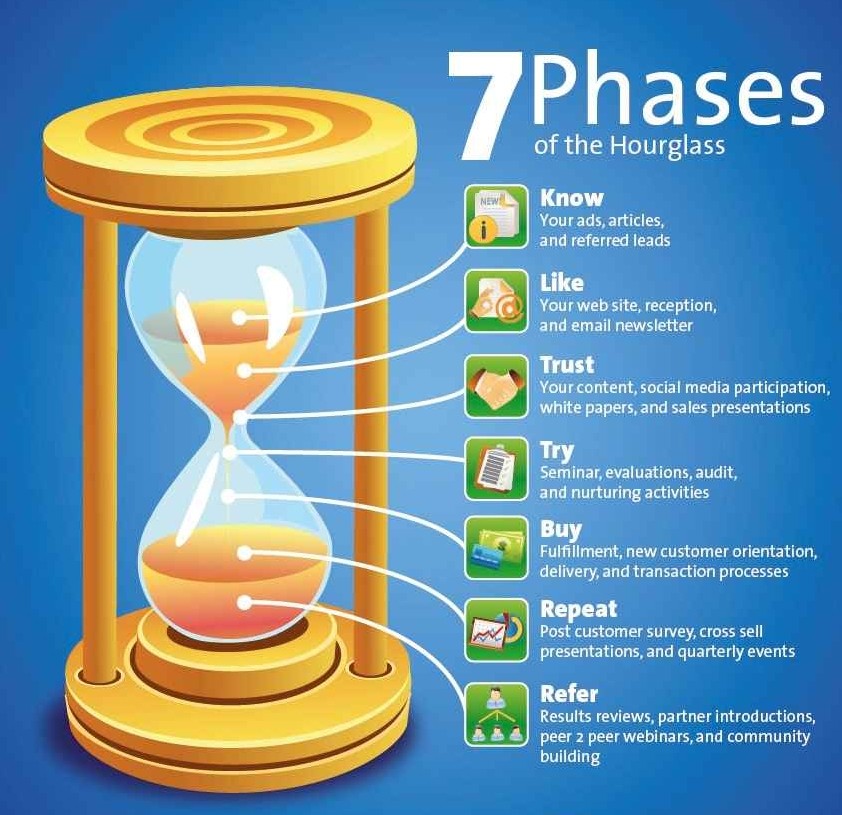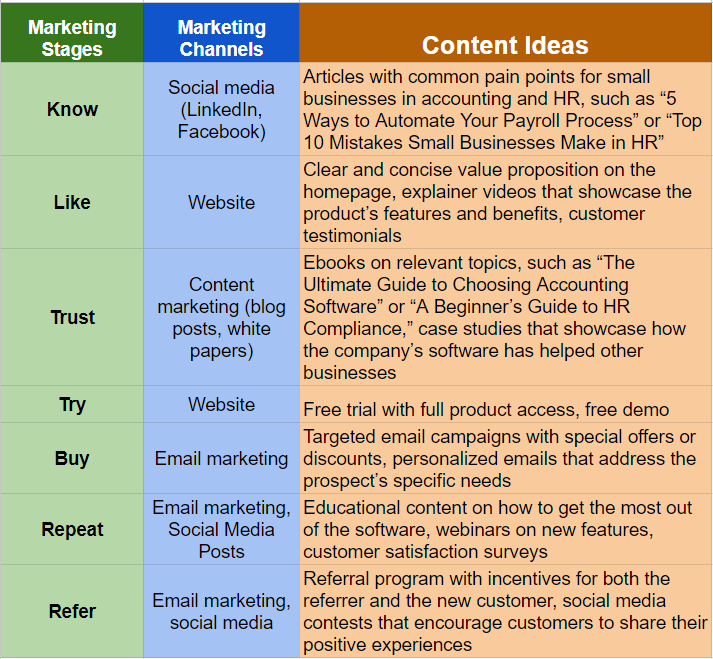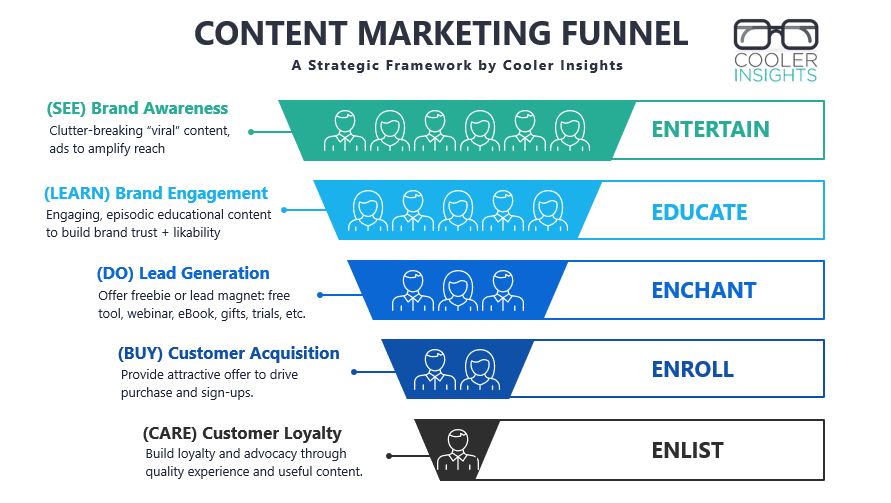
Wish to get more out of your Business to Business (B2B) Content Marketing efforts? Consider building a smooth running content marketing machine!
To do so, you’ll need a holistic, process-driven, and step-by-step system—one that you can follow again and again.
Enter The Ultimate Marketing Engine—5 Steps to Ridiculously Consistent Growth by Duct Tape Marketing’s John Jantsch.
This easy to read book comes with a comprehensive marketing method—to grow your business by helping your clients to grow theirs!
Yes, the secret marketing sauce here lies in how you as a business owner can help your clients to scale up. During that process, your business itself will also experience tremendous growth.
While the book was written for any business in general, I found that it applies more to B2B businesses than B2C ones.
Let’s look at the key lessons from the book. (You can get 2 free chapters by filling up a form here!)
The 5 Steps of the Ultimate Marketing Machine
To build a marketing engine—you can call this a content marketing or a digital marketing machine—you need to consider five stages:
- Map: Where are your best customers today and where do they want to go?
- Uncover: What are the real problems that you solve for your customers?
- Narrow: Focus on your top 20 percent of your ideal customers (see 80/20 rule for more).
- Attract: Create the content that attracts your ideal customers
- Scale: Serve your customer’s entire ecosystem, and grow with your customer
Let’s look at each of these stages in detail.
Map: Build Marketing Hourglass
To cultivate a relationship with your target audience, you’ll need to engage them at every stage of their buying journey.
Calling it the Marketing Hourglass, this journey involves the following stages:
- Know: How do you get your customers to be aware of your brand?
- Like: How do you create a positive impression?
- Trust: How can you build trust and reputation?
- Try: What can you offer to get them to try?
- Buy: How do you turn a prospect into a customer?
- Repeat: What makes a customer repeat their purchase?
- Refer: How do you get customers to refer others to you?
These stages involve coming up with different types of content as shown by the infographic below.

Courtesy of Duct Tape Marketing
Here’s an example of how this may look like for a hypothetical SaaS company that offers accounting and HR management software.

In a way, the marketing hourglass is very much like a content marketing funnel, perhaps with a finer breakdown of each stage.
Map: Turn Customers to Members
Don’t think of customers as transactions. Instead, think of them as transformations.
I love how Jantsch challenged us to “help our customers go from where they are now to where they want to be.”
This view of customers as members involves deriving a Customer Success Track that involves asking these questions:
- Where are your best customers now? How far are they from achieving the results that they want?
- What defining characteristics can you map out for your customers in each of their growth stages?
- What milestones do they have to cross to progress to the next level?
- What activities, tasks or steps must we (or our customers) take to cross each milestone?
- What systems must we put in place to help them cross each stage of their success journey?
Map: Establish Customer Success Track (CST)
According to the book, there are various stages in your customer’s success journey. How these stages are defined depends on the nature of your business.
- Foundation: Rudimentary or basic level of performance
- Level-Up: Some level of efficiency, with basic structure and system
- Organize: More advanced level of organisation, with systems and processes in place
- Stabilize: Able to consistently repeat performance, with more automation
- Scale: Ability to not only grow in multiples, but outperform the market
In the case of a training institute or school, for instance, these stages may be the following:
- Borderline student
- Average student
- Above average student
- Good student
- Excellent student
Each of these customer success stages will have the following:
- Stage names: Use something easy and intuitive
- Characteristics: Define the features of your customer at that stage
- Challenges: What must your customer overcome at each stage to move on to the next
- Promise: The breakthroughs that customers can get at each stage
Once you’ve got your CST in place, you can use it as a way to formulate your message, sell your products and services, train your staff, and use it as a checklist to guide everything that you do for your customers.
Uncover: Define Customer Problems (and Solve Them)
In uncovering your customer problems, you’ll need to position yourself as their best solution provider.
#1 Three Questions to Answer
Before your craft your problem solving message, check that you can answer these customer questions:
- Do you get me? Demonstrate clarity in knowing what their real problem is.
- Can I trust you? Provide confidence in your ability to solve the problem.
- Did you keep your promise? Give them a sense of control in the process.
#2 Solving Customer Problems
To come up with the right problem-solving message, there are four-steps you can employ:
- Ask Method: Ask open ended questions of your customers, eg “Do you remember how you found us and why you chose us? What do we do that makes you want to stay with us?”
- Review Method: Search online to see what customers write on review websites like Google, Yelp, Facebook Groups, Hardwarezone, Reddit, TripAdvisor, and other forums.
- Problem Solving Matrix: Come up with a list of your customer problems and link each to a solution you offer.
- Craft Problem Summary Statements: Craft a couple of statements to represent what you do for different customer problems.
Narrow: Construct Ideal Customer Persona
Serving the right customer segments can mean the difference between being profitable and unprofitable.
Consider the three characteristics of the right customers:
- Must Have: What are the mandatory needs for an individual or company to be your customer? For example, my clients or trainees are those who require marketing help or services.
- Nice to Have: Here’s where it narrows—in the case of Cooler Insights, we work best with companies that have internal staff handling marketing.
- Ideal to Have: Finally, consider your ideal customers, especially those who recommend other customers to you. Or those that repeatedly use your services. For us, it would be clients that have grown beyond a certain size.
When you construct your customer personas, you’ll need to answer these questions:
- What does this persona look like (demographics, psychographics)?
- What are the problems that they want to solve?
- What behaviours do they have?
- What objections must you overcome?
- Where do they get their information?
Narrow: Plan Your Core Content
This is where you do some content planning.
#1 Script Your Core Story
Come up with a core story script that defines what your company does. It can be in the form of a brand story, which defines your customer problem, explain the forces driving the problem, paint the solution, explain how they can get it, and call the reader to action.
You can read this article to learn more about scripting your story.
#2 Build Content Road Map
Next, consider building out your content according to your customer journey stages. When you do so, address these three questions:
- What questions do my prospects and customers have at each stage?
- What objectives are they trying to achieve at each stage?
- What content will I need for each stage?
#3 Content Planning Workshop
A workshop is a productive way to get content ideas for your Marketing Hourglass.
This can be divided into three different channels:
- Owned Content: Content on your website, like blog posts, landing pages, case studies, and product descriptions
- Shared Content: Posts on social media, as well as live streaming and articles on third party websites
- Conversion Content: Include email follow-up funnels, newsletters, and promotions
When you brainstorm, consider introducing monthly themes and campaigns, quarterly objectives and priorities, as well as your overall content strategy planning.
Attract: Develop Right Content Assets
After you have planned your content, you need to execute them on the right platforms and channels.
#1 Optimise Website Design
Consider the following website elements when you build your website, and include them all on your home page!
- Promise: What do you solve for your customer? Put it above the fold so that it’ll be the first thing your customers see. Include a Call To Action too!
- Story Bits: This could be elements of your Core Story Script, in the form of bullet points or a short paragraph.
- Ideal Customers: Showcase who your ideal customers are—testimonials, logos of customers, case studies, transformations achieved.
- Trust Elements: Include any awards, certifications, endorsements, and recognitions.
- Social Proof: Highlight how many customers you have, how many five-star reviews, etc.
- Core Offering: What are the three or four most important offerings? Place them right here.
- More Content: If you do regularly blog, include a way to highlight them upfront on your homepage.
- Calls To Action: Where possible, include adequate CTAs above the fold, somewhere in the middle, and somewhere towards the button.
#2 Build a Content Hub
A fundamental aspect of content marketing, a content hub provides you with a way to organise your existing content into well-managed topics and subtopics.
This helps you to do well from an SEO perspective, given that Google likes well-organised resource pages that are properly linked.
Your hub page can be organised like a table of contents, with each subtopic linked to an individual blog post on your website.
#3 Establish Marketing Funnels

Thanks to marketing automation, it is now possible to follow up with leads and nurture them along various tracks.
In the book, we’re introduced to various funnels such as a prospect nurture funnel, a speaking funnel, a networking funnel, a strategic partner funnel, a sales follow-up funnel, as well as a referral funnel.
Scale: Establish Customer Referral System
The final stage in building your ultimate marketing engine is to introduce a referral system.
Here, your goal should be to serve your ideal customer’s ecosystem, and there are several strategies taught in the book:
- Identify partners: Look for the ideal contributors to your customer’s success beyond your business. They could be suppliers, vendors, partners, advisors, accountants, or other contributors.
- Educate their ecosystem: Find a way to teach your customer’s stakeholders how they can better serve your customer. For instance, you could teach other suppliers to your customers how they can better optimize your customer’s performance.
- Make it win-win-win: Seek to provide value to everybody involved in the educational process.
- Formalize process: Make it a system that is workable for everybody.
To nudge more referrals from your customer/partner, as well as their ecosystem, consider the following strategies:
- Co-branding: Provide useful resources that your strategic partners can co-brand and distribute to their database of customers
- Workshops: Organise workshops to provide valuable branded content and build trust, both online and offline.
- Joint marketing: Promote and market to each other’s networks, creating synergies for each other’s businesses.
- Create a club: Make it work like a membership club or society, where members can learn from each other. And yes, this should certainly involve your customers!
Conclusion
Building a content marketing machine (or factory or engine) isn’t an easy task. There are many different steps and processes to follow, as well as systems and structures to establish.
Thanks to The Ultimate Marketing Engine, we now have a way to put them all together in one place.
What I’ve covered is really just a 10,000 foot view—you’ll need to get a copy of the book to truly appreciate all the different aspects of the system.

What role will artificial intelligence and automation play in building the marketing machine of the future?
Artificial intelligence and automation are set to revolutionise the marketing landscape by enhancing personalisation, improving customer segmentation, and automating repetitive tasks. This will enable marketers to craft more targeted campaigns with greater efficiency and at scale, ultimately leading to better customer experiences and increased ROI. AI’s data analysis capabilities will also provide deeper insights into consumer behaviour, allowing for more strategic decision-making. In summary, AI and automation are key to building more effective and efficient marketing systems in the future.
By focusing on building a robust marketing machine, this guide helps businesses aim for long-term success. It’s not just about short-term gains but creating a sustainable marketing infrastructure.
Nice blog …easy to read and understand !! Really impressed